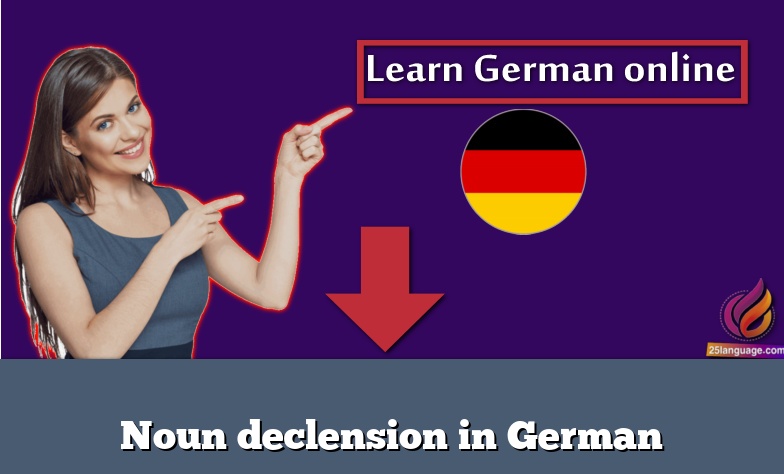Noun declension in German

Learning noun declension in German involves understanding how nouns change their forms based on their case (nominative, accusative, dative, and genitive) and number (singular and plural). Here’s how you can learn and practice noun declension:
- Study Noun declension in German Charts: Review noun declension charts that illustrate how nouns change in different cases and numbers. These charts show the different endings for each case and number combination.
- Learn the Cases: Understand the function of each case. For example, the nominative case is used for the subject of a sentence, the accusative case for the direct object, the dative case for the indirect object, and the genitive case to indicate possession or relationships.
- Memorize Case Endings: Memorize the case endings for each gender (masculine, feminine, neuter) and number (singular, plural). Pay attention to any changes in articles, adjectives, or pronouns that accompany the nouns.
- Practice with Noun Declension Exercises: Use exercises specifically designed to practice noun declension. These exercises may involve filling in the blanks with the correct noun forms in different cases and numbers.
- Build Vocabulary: Expand your vocabulary and practice noun declension simultaneously. Learn new nouns along with their corresponding article, declension, and plural forms. Use flashcards or vocabulary lists to practice recalling the correct noun forms.
- Read and Listen to German Texts: Read books, articles, and listen to German podcasts or conversations. Pay attention to how nouns change in different cases and numbers. Look for patterns and examples of noun declension in context.
- Write and Speak in German: Practice using nouns in sentences while paying attention to their declension. Write sentences and paragraphs, ensuring that the nouns agree with the case and number required by the sentence structure.
. Here are examples of noun declension in different cases and numbers:
Masculine Noun (der Hund – the dog):
- Nominative (subject): Der Hund ist groß. (The dog is big.)
- Accusative (direct object): Ich sehe den Hund. (I see the dog.)
- Dative (indirect object): Ich gebe dem Hund einen Knochen. (I give the dog a bone.)
- Genitive (possession): Das ist das Haus des Hundes. (That is the dog’s house.)
Feminine Noun (die Katze – the cat):
- Nominative (subject): Die Katze ist klein. (The cat is small.)
- Accusative (direct object): Ich sehe die Katze. (I see the cat.)
- Dative (indirect object): Ich gebe der Katze Futter. (I give the cat food.)
- Genitive (possession): Das ist das Spielzeug der Katze. (That is the cat’s toy.)
Neuter Noun (das Buch – the book):
- Nominative (subject): Das Buch ist interessant. (The book is interesting.)
- Accusative (direct object): Ich lese das Buch. (I am reading the book.)
- Dative (indirect object): Ich gebe dem Buch einen Platz im Regal. (I give the book a place on the shelf.)
- Genitive (possession): Das ist die Seite des Buches. (That is the book’s page.)
Plural Noun (die Blumen – the flowers):
- Nominative (subject): Die Blumen sind schön. (The flowers are beautiful.)
- Accusative (direct object): Ich sehe die Blumen. (I see the flowers.)
- Dative (indirect object): Ich gebe den Blumen Wasser. (I give water to the flowers.)
- Genitive (possession): Das ist der Duft der Blumen. (That is the scent of the flowers.)
These examples demonstrate how nouns change their forms based on the case (nominative, accusative, dative, genitive) and number (singular, plural). Pay attention to the articles, adjective endings, and any other accompanying words that modify the nouns.


























